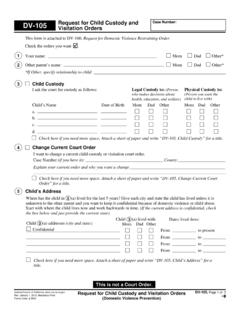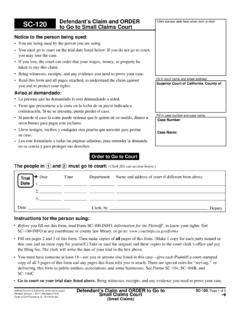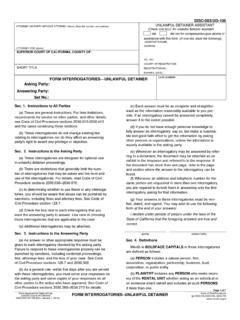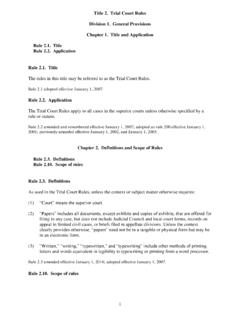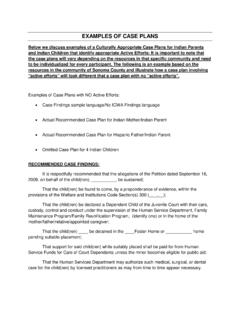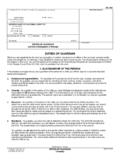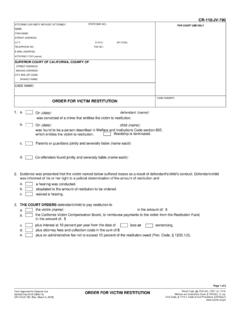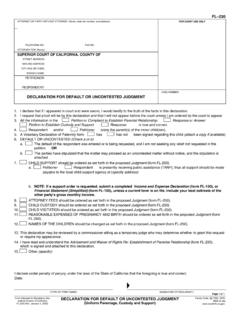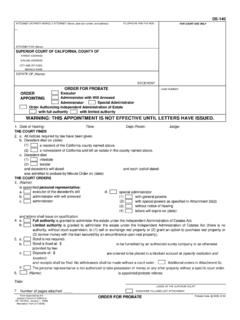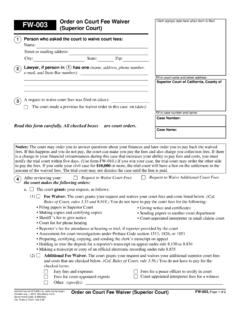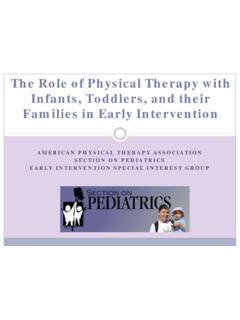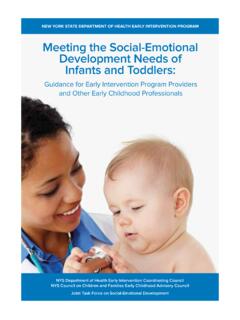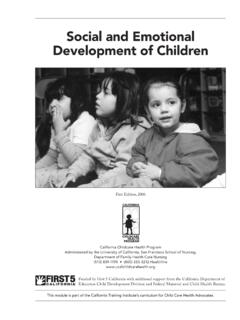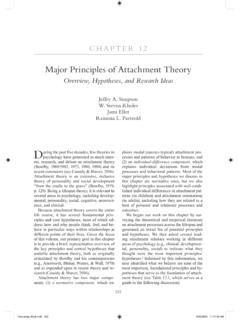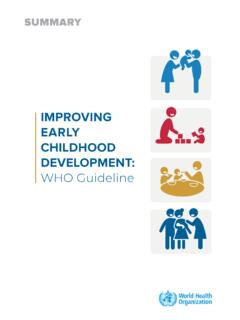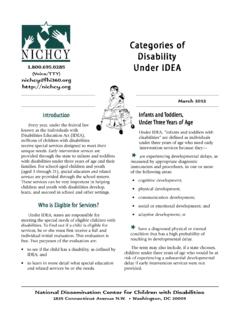Transcription of Model Parenting Time Plans for parent/child access
1 Model Parenting time Plansfor parent/child accessMondayTuesdayWednesdayThursdayFrid aySaturdaySunday to parents .. 1 why Plans are necessary .. 2 how to use this booklet .. 3 which plan should we choose? .. 4 special circumstances .. 8 Parenting time Plans .. 9 long distance .. 24 sample calendars and suggested Parenting time plan language for court orders .. 32 blank calendars.. 47 Model Parenting time Plansfor parent/child accessRaising children presents challenges for all parents. Whenparents live in separate homes the challenges are greaterbecause relationships become more complicated.
2 Sometimesparents disagree about how much time children shouldspend with each of them. The following information will helpparents reach agreements about Parenting time ( access )with their children. A statewide committee of judicial officers, mental healthproviders and attorneys created this Model after consultingwith nationally known experts on child development andafter reviewing current research and guidelines from othercommunities. Decisions about access depend on many cir-cumstances, but the age of the child is very important.
3 ThisModel offers information about what children learn, feel, andneed at different ages. It also provides suggested plansappropriate for each age group and language that may beincluded in court describe the loss of contact with a parent as theworst consequence of divorce or parental separation. Unlessspecial circumstances exist, preserving a healthy and ongoingrelationship between children and both their parents afterdivorce or separation is of utmost importance. Positiveinvolvement with both parents furthers the child's emotionaland social development, academic achievement and overalladjustment.
4 To parents1 Written access Plans provide children and parents with someassurances of maintaining meaningful contact and can preventfuture Model is intended to encourage opendialog and cooperation between parents. The Court prefersthat parents reach agreements about schedules parents reach agreements about schedules on theirown, they are more likely to remain cooperative as their childrengrow do best when their parents reverse is also true. Children who experience ongoingconflict between parents are at high risk for suffering seriouslong-term emotional problems.
5 If parents need assistance inworking out the schedules, private and court sponsoredmediation services are available in most Arizona counties. why Plans are necessary2 Parents must state their agreement about legal custody in their Parenting may agree that one parent should have sole custody or that joint legalcustody is in their children s best interests. A parent who has sole custody hasthe right to make major decisions about the children s health, education andreligious upbringing. Parents who have joint legal custody have equal rights tomake such decisions, unless otherwise specified.
6 Joint legal custody does notnecessarily mean equal Parenting key to a successful custody arrangement is the written Parenting plan whichshould state the agreements parents reach about legal custody, the sharing ofrights and privileges and the schedule for access . The schedule should considereach child s developmental needs as identified in this Locate Plans for your child/children s Meet with your child s other parent to discuss custody andwhich plan for access (A, B or C) best suits your family After you decide which access plan is best, use the blankcalendar at the end of this booklet to shade in the days andtimes each parent has access .
7 To assist you, this Modelincludes sample calendars with sample access plan languageto include in court orders. These are examples only. Youmay choose any days or times you Because each child is unique, you may wish to establishdifferent Plans for children of different ages while makingsure that brothers and sisters are able to spend as muchtime together as possible. Be flexible!5. If you are in a county with a self-service center, or you haveaccess to the Internet, you may obtain a Parenting Planform for custody and access that may be submitted to to use this booklet34 The following access options are designed to allow parents, orthe Court if necessary, to select the proper plan after consideringthe family s unique circumstances.
8 Children differ in how longthey are comfortable being away from each parent. Some childrenprefer spending more time at one home, while others move backand forth on a regular basis with ease. Parents may need totolerate disruption of their own scheduleand more or less timewith their children than they might otherwise prefer to provide thechildren with a sense of security and well being. When choosing a plan , parents should consider the child srelationship with each parent. If a parent has never been a partof a child's life or has not had contact with the child for anextended period, access should start slowly and graduallyincrease as the child adjusts and feels parent who has anextremely busy work schedule, has notbeen the child s primary caregiver or wants regular access with-out extensive caregiving responsibility may considerPlan parent who has beeninvolved in the day-to-day careof thechild may desire greater access .
9 This parent may considerPlan parent who hascaregiving experienceand desires maximumaccess may considerPlan C. For ages three and older, all PlanC schedules are for shared the child adjusts to the initial plan and feels comfortable, parentsmay consider increasing access by choosing another plan . Insome cases, it may be beneficial to change from one plan toanother as the child gets older. When increasing access time , aparent s past involvement in caring for the child must be consid-ered as well as the parent s willingness and ability to learnnecessary caregiving plan should we choose?
10 5If parents cannot decide which custody arrangement and accessschedule is best for their family, the Court will evaluate the case,will designate custody and will create an access plan it finds is inthe children s best the distance between the two residences is more than 100miles, parents should refer to the "Long Distance Parent/ChildAccess" section of this Factors To Consider When Choosing A plan the child's age, maturity, temperament and strength ofattachment to each parent any special needs of the child and parents the child s relationship with siblings and friends the distance between the two households the flexibility of both parents work schedules and the child sschedule to accommodate extended access childcare arrangements transportation needs the ability of the parents to communicate and cooperate the child's and parents' cultural and religious practices a parent's willingness to provide adequate supervision even ifthe parent
